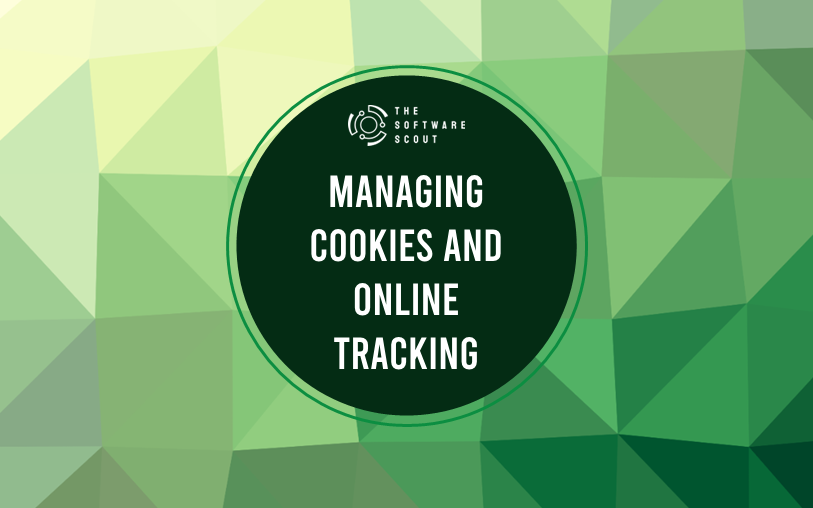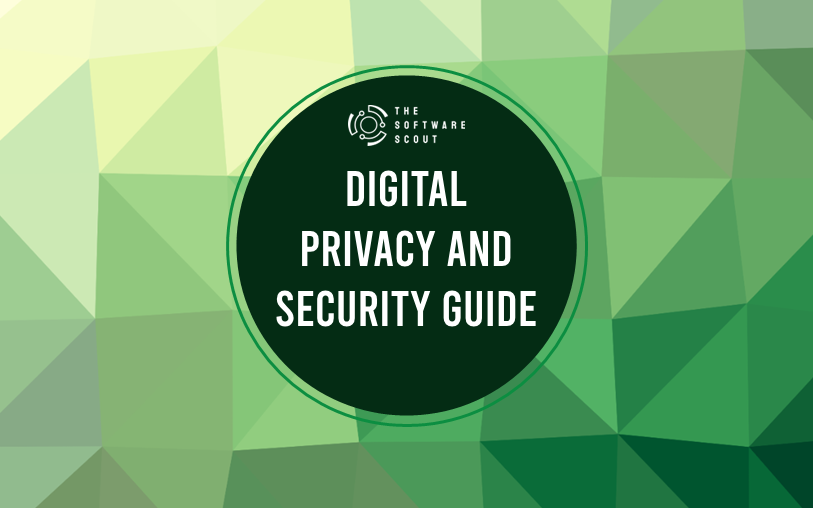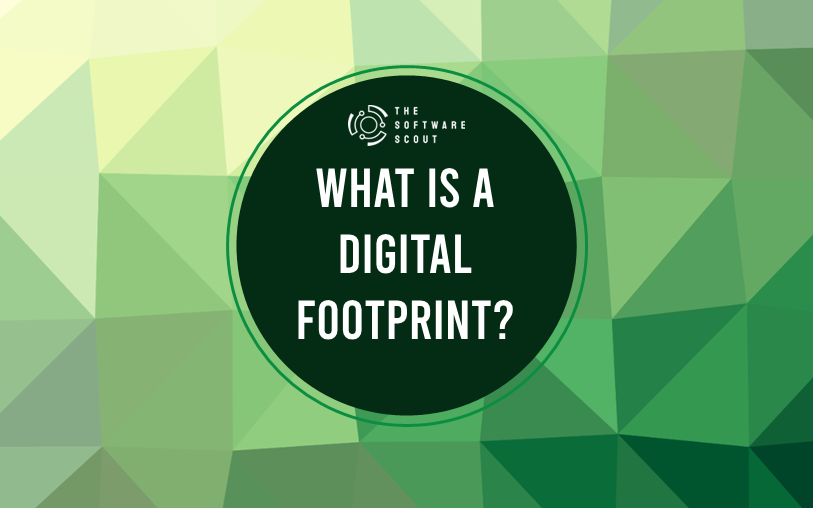Cookies might sound harmless, yet they hold the key to much of the personalized browsing we experience every day. They help websites remember preferences, keep track of cart items, and customize ads to our habits.
When managed poorly, they can raise privacy concerns and leave us wondering how much data we’re sharing without realizing it.
This guide sheds light on the essentials of cookies, how they contribute to online tracking, and the practical steps you can take to keep your personal data safer.

Understanding the Basics of Cookies
Cookies are small text files placed on your device by the websites you visit. They serve as digital footprints that let a site remember who you are and how you navigate through different pages. This might include identifying your browsing language, tracking the products in your shopping cart, or saving login details for future sessions.
While cookies themselves don’t infect your system with malware, the data they store can sometimes become a treasure trove for advertising companies or even cybercriminals who might attempt to exploit that information. Most browsers today allow you to control or block these files in some capacity, which is why understanding their function is the first step to making informed choices about your privacy.
Key Points About Cookies:
- They’re designed to enhance user experience by remembering preferences.
- They can be shared with or accessed by third parties.
- They’re stored locally on your device, often with an expiration date.
Why This Matters: Cookies determine whether you see generic or customized content. By learning how they operate, you can choose the level of personalization you prefer when browsing.
Why Cookies Exist and How They Work
Websites use cookies for a variety of reasons. Some are essential for site functionality, such as logging into an account or keeping track of items in an e-commerce cart. Others exist to personalize what you see, from recommended products to targeted ads. Here’s a simplified breakdown of how they work:
- Website Visit: You open a page, and the site’s server sends a cookie to your browser.
- Storage: Your browser stores that cookie in a specific folder tied to the website’s domain.
- Subsequent Visits: When you revisit the same site, your browser sends the stored cookie(s) back to the server.
- Personalization: The site reads the cookie data and uses it to recall your settings or provide tailored content.
This process aims to create a seamless user experience, but it also paves the way for advanced tracking across different websites, especially when the same advertising or analytics service is present on multiple domains.
Types of Cookies
Not all cookies are created equal. They come in various forms, each with its own purpose and lifespan. Understanding these categories helps you decide which types are acceptable in your browsing routine and which ones you might want to restrict.
Session Cookies
- Definition: Temporary files that last only as long as your browser is open.
- Purpose: Keep track of session-specific data, like form entries or shopping cart items.
- Expiration: Deleted once the browser is closed.
Example: You put three items into an online shopping cart. When you leave the page and then return shortly, the items remain in the cart because of session cookies.
Persistent Cookies
- Definition: Remain on your device until they expire or you manually delete them.
- Purpose: Store login credentials, language settings, or any data that might be reused in future visits.
- Expiration: Can last for days, months, or even years, depending on their settings.
Example: A website remembering your username and password the next time you visit, so you don’t have to log in manually.
First-Party Cookies
- Definition: Created by the domain you’re currently visiting.
- Purpose: Improve on-site user experience, maintain settings, and track user behavior for internal analytics.
- Privacy Impact: Generally considered less intrusive since they’re limited to one domain.
Example: A news website storing your preferred reading layout and font size.
Third-Party Cookies
- Definition: Created by a domain other than the one you’re browsing, often tied to ad networks or analytics platforms.
- Purpose: Track user activity across multiple sites, building a profile of your interests and behavior.
- Privacy Impact: Can be used for more invasive targeting and is frequently criticized for privacy risks.
Example: You see the same ad banner across different websites because the same third-party cookie identifies your browsing pattern.
Secure Cookies
- Definition: Cookies that are only transmitted via encrypted connections (HTTPS).
- Purpose: Keep data safe from interception during transit.
- Privacy Impact: Reduces the risk of third parties intercepting cookie data.
Example: An online banking service sets secure cookies so hackers cannot easily read or modify sensitive information.
Online Tracking: Seeing the Bigger Picture
Cookies alone aren’t the only way you’re tracked on the web. Modern online tracking methods use numerous technologies in addition to cookies. These include:
- Browser Fingerprinting: Collecting details such as browser type, installed fonts, screen resolution, and unique device identifiers.
- IP Tracking: Monitoring your activity based on the IP address used to access the internet.
- Pixels and Beacons: Tiny transparent images embedded in emails or web pages that track whether a user opens an email or visits a specific page.
A single third-party cookie might be part of a broader tracking network. That network can combine data from various sources to build a detailed profile of your browsing habits. Marketers use this profile to serve more personalized ads, while analytics companies might use it to generate insights into user behavior.
Privacy Concerns and Implications
When people discuss online privacy, cookies and tracking inevitably become a central focus. The main issues often revolve around who has access to your data, how it’s used, and whether it’s shared or sold to other entities. While personalized ads can be convenient, the data collection process sometimes feels invasive.
Potential Risks
- Unwanted Profile Building: Companies might create a detailed dossier on your browsing habits that you never authorized.
- Data Sharing or Selling: Your data can change hands multiple times without clear consent.
- Security Vulnerabilities: Poorly managed cookies or unsecure connections could expose data to malicious actors.
- Consent and Transparency: Many websites show cookie banners, but not everyone reads the fine print. This can lead to consenting to more tracking than intended.
Being conscious of these issues is the first step in protecting yourself. By knowing exactly how cookies track you and how companies use that information, you can make decisions that align with your comfort level.
Managing Cookies in Popular Browsers
One of the simplest ways to gain control over cookies and tracking is by adjusting your browser settings. Most modern browsers have built-in features that let you block or delete cookies. Below are practical steps for several popular browsers:
Google Chrome
- Open Settings: Click the three-dot menu at the top-right corner, then select Settings.
- Navigate to Privacy and Security: Look for Privacy and Security in the left-hand menu.
- Site Settings: Under Privacy and Security, select Site Settings and then go to Cookies and site data.
- Configure Cookie Preferences: Enable options such as “Block third-party cookies” or “Clear cookies and site data when you close all windows.”
Tip: If you’re using multiple devices, sign in with your Google account to sync your settings. This ensures consistent cookie preferences across different Chrome installations.
Mozilla Firefox
- Open Settings: Click the hamburger menu at the top-right corner, then choose Settings.
- Privacy & Security Panel: Scroll down to Browser Privacy.
- Choose a Privacy Mode: Options typically include Standard, Strict, or Custom. Strict mode blocks most third-party cookies by default.
- Manage Exceptions: You can allow certain trusted sites to use cookies while blocking others.
Tip: Firefox has Enhanced Tracking Protection, which can block known trackers and fingerprinting scripts without needing multiple manual adjustments.
Safari
- Preferences: For macOS users, go to Safari in the menu bar, then choose Preferences.
- Privacy Tab: Within Preferences, click on Privacy.
- Prevent Cross-Site Tracking: Enable this option to block third-party cookies that track you across different websites.
- Manage Website Data: Review which sites have stored cookies and remove them if desired.
Tip: Safari’s Intelligent Tracking Prevention automatically limits the lifespan of tracking cookies. This is a useful feature to minimize extensive data gathering.
Microsoft Edge
- Settings: Click the three-dot menu, then select Settings.
- Cookies and Site Permissions: Head to Cookies and site permissions in the left-hand panel.
- Manage and Delete Cookies: Choose whether to block all cookies or only third-party cookies. You can also clear them on exit.
- Tracking Prevention: Pick a level—Basic, Balanced, or Strict—to automatically control how trackers can follow you online.
Tip: The Balanced setting is usually a good middle ground for most users, blocking known trackers while still allowing some functionality that relies on cookies.
Third-Party Tools for Greater Control
Browser settings provide a foundation, but there are additional measures you can take if you want stronger protection.
Browser Extensions
- Privacy Badger (from the Electronic Frontier Foundation) blocks known trackers and learns as you browse.
- uBlock Origin is primarily an ad-blocker, but it also offers robust anti-tracking features.
- Ghostery actively displays and blocks trackers on webpages, giving you real-time insights.
These extensions typically let you see which trackers are attempting to follow you, so you can decide whether to allow or block them.
Dedicated Privacy Tools
- VPN Services: Encrypt your internet connection and mask your IP address. While this doesn’t remove cookies, it can hide certain identifiers from advertisers.
- Private Search Engines: DuckDuckGo or Startpage limit how much data is shared when you perform searches. They’re not cookie managers, but they reduce overall tracking exposure.
- Script Blockers: NoScript for Firefox or ScriptSafe for Chrome let you control which scripts run on each page, preventing hidden tracking scripts from loading automatically.
Cookie Management Software
Certain third-party applications monitor and manage cookies for you. They can automatically clear cookies when you close a browser or set rules for specific domains. This approach can give you more granular control, though setup might be more involved than simply using a browser’s built-in options.
Mobile Cookie Management
Phones and tablets are just as susceptible to invasive tracking methods as desktops. Mobile browsers often come preconfigured to allow cookies for ease of use. Taking control on a smartphone involves slightly different steps depending on your platform.
Android
- Chrome on Android: Tap the three-dot menu in the top-right, select Settings, then Site settings, and choose Cookies. You can block cookies entirely or block only third-party cookies.
- Firefox for Android: Go to Settings, tap Privacy & Security, and look for Enhanced Tracking Protection. You can pick a privacy level or manage cookies in detail.
Pro Tip: Some specialized mobile browsers, like Brave, come with tracking protection turned on by default, reducing the need for manual adjustments.
iOS (iPhone & iPad)
- Safari on iOS: Open the Settings app, scroll to Safari, and turn on Prevent Cross-Site Tracking. You can also clear cookies in the Advanced section.
- Chrome on iOS: Tap the three-dot menu, go to Settings, then Content Settings. Look for Cookie Settings where you can configure how cookies are handled.
Pro Tip: Apple’s Intelligent Tracking Prevention is quite strict, so Safari on iOS already blocks many tracking cookies. However, verifying those settings can provide extra peace of mind.
Balancing User Experience and Privacy
While some might be tempted to block every cookie in existence, that approach can disrupt basic site functionality. For example, blocking all cookies might log you out of sessions every time you refresh a page or stop a site from remembering items in your shopping cart.
Strategies for a Balanced Approach
- Block Third-Party Cookies: This filters out many invasive trackers without breaking essential site features.
- Allow First-Party Cookies: Ensure sites you trust can store preferences and login details.
- Use Extensions Selectively: Choose a reliable privacy extension that shows how many trackers it blocks, giving you a clear window into the data being collected.
- Clear Cookies Periodically: Manually clearing cookies once in a while can remove lingering trackers, though you’ll need to log back into sites.
By balancing convenience with privacy, you can enjoy relevant content and maintain strong protections around your personal information.
Future Trends: Cookies and Online Tracking
The world of online tracking evolves rapidly. Some browsers, especially Safari and Firefox, have made aggressive moves to limit third-party cookies. Governments around the globe are introducing legislation (like the General Data Protection Regulation in the EU and the California Consumer Privacy Act in the U.S.) that limits how companies can collect data.
Emerging Alternatives
- Browser Privacy Sandboxes: Google has been experimenting with Privacy Sandbox initiatives that aim to replace third-party cookies with less invasive technologies.
- Contextual Advertising: Advertisers may shift toward keyword-based or contextual ads, relying less on personal data and more on the content of a webpage.
- Federated Learning of Cohorts (FLoC) or Topics API: Methods designed to group users by interests without revealing individual user data. The ultimate goal is to serve relevant ads while respecting privacy boundaries.
Why This Matters: As these new technologies and regulations emerge, the way marketers track behavior might shift significantly. Staying informed about these changes ensures you’ll be ready to adapt and continue safeguarding your data.
Conclusion
Cookies can either enhance a browsing session or compromise privacy, depending on how they’re utilized and managed. They were designed to streamline user experiences and store preferences, but third-party cookies can contribute to sophisticated tracking methods that some users find intrusive. By understanding the basics of how cookies operate, you gain the ability to make informed choices that align with your comfort level.
Taking a proactive approach involves simple steps: adjusting browser settings, using privacy-focused extensions, clearing cookies periodically, and exploring mobile-friendly options on your phone or tablet. Striking a balance between convenience and security can be done by allowing essential first-party cookies while blocking the bulk of third-party trackers. The future of online privacy is likely to move toward more transparent and user-friendly solutions, driven by legislation, evolving browser technology, and shifting advertising strategies.
Key Takeaways:
- Familiarize yourself with different cookie types—session, persistent, first-party, and third-party—to understand their impact on your privacy.
- Customize browser settings to allow cookies where needed and block them where appropriate.
- Use trusted extensions and third-party tools for granular control over trackers.
- Clear cookies regularly, especially if you use public or shared computers.
- Stay informed about emerging trends in tracking and advertising, so you can adjust your strategy over time.
With the right knowledge, you can enjoy a personalized online experience without compromising too much on privacy. Each choice you make—whether it’s blocking specific cookies or enabling a browser’s built-in privacy feature—brings you closer to a more secure and transparent relationship with the internet.
Boyd Hudson is a technology writer at The Software Scout with over 15 years of experience in technology roles across the Asia-Pacific region. He covers a wide range of tech topics, from software solutions to emerging industry trends

